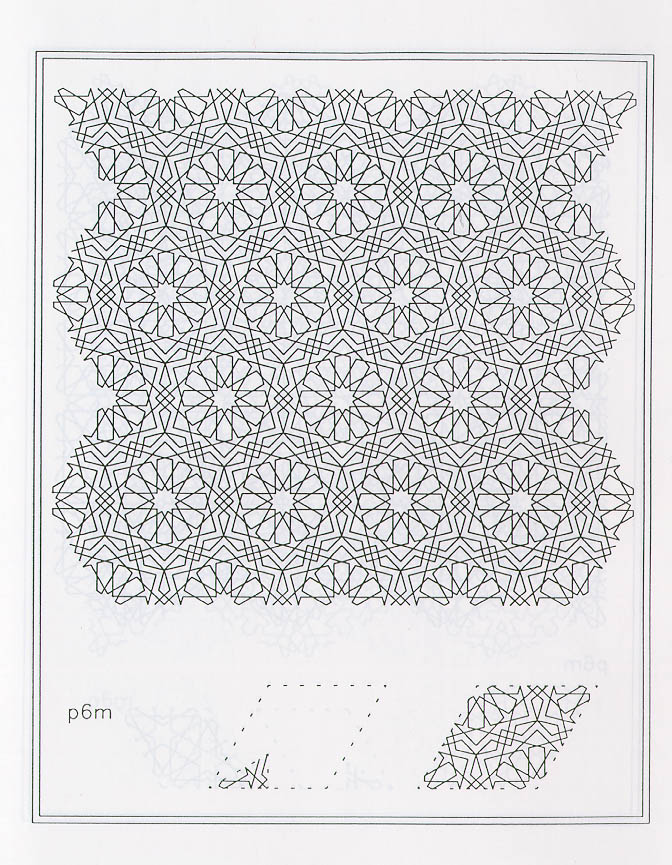allahallah All of these numbers, letters, reflection, glides, and so on can get confusing. What does it all look like in a real pattern? Islamic patterns of every symmetry classification are discussed and examples are given in the excellent book Symmetries of Islamic Geometric Patterns, by Syed Jan Abas and Amer Shaker Salman. Here is an example of an Islamic pattern and its classification:

Scanned from Symmetries of Islamic Geometrical Patterns
allahallahThis pattern is p6mm (p6m), meaning the unit cell shape is (in this case) a parallelogram, the parallelogram has a 360 degree rotation (creating the star shape), and within this parallelogram there are two mirror reflections (along both diagonals).
allahallah Common Pattern Types in Islamic Art
allahallah In fact, the kind of pattern we just examined is one of the most common is Islamic Art. Although it is possible to find examples of all symmetrical patterns in Islamic Art, p6m and p4m are by far the most common. Cmm, pmm, and p6 are also used with some frequency.
allahallah Khatem Sulemani, the 8-Point Star
allahallahNotice that in the Islamic pattern studied above, the star shape is a very prominent element. The star shape is the hallmark of Islamic pattern. The most characteristic star in Islamic art is the 8-point star, called the Khatem Sulemani.
allahallahThe Khatem Sulemani can be created geometrically with a circle and two squares. The two squares lay superimposed on each other, one rotated 45 degrees, and are inscribed within the circle. The addition of squares and concentric circles to the basic Khatem Sulemani creates the beautifully intricate multi-pointed stars which exist in patterns throughout the Islamic world.
allahallah This concludes our tour of the mathematics of Islamic Art. Please return home to pick up another link about Islamic Art.